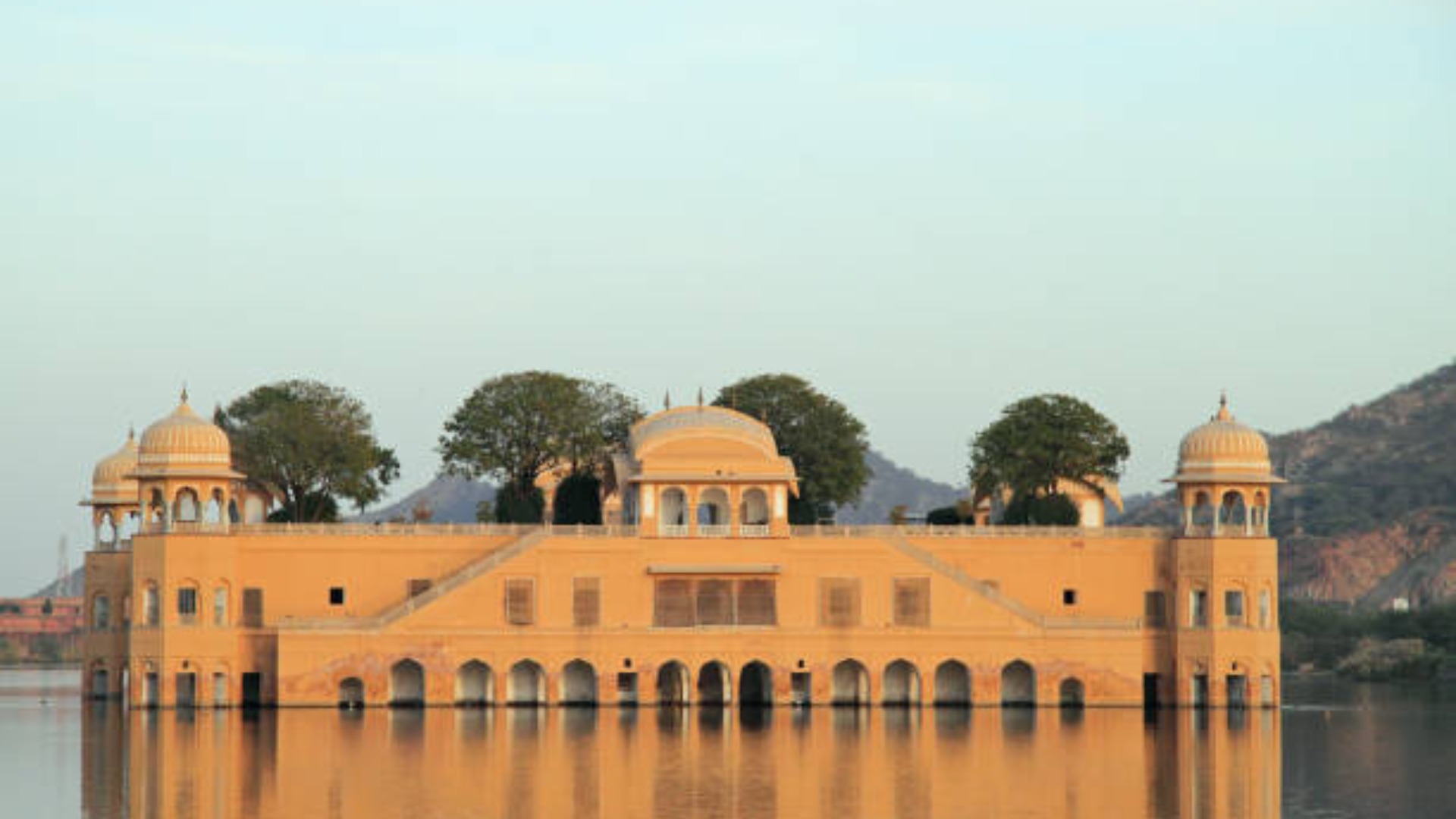Jal Mahal, one of Jaipur’s most captivating landmarks, is truly a sight to behold, gracefully floating on the waters of Man Sagar Lake. If you’re curious about how to visit Jal Mahal, this complete guide will help you explore this architectural wonder in the best way possible. Whether you’re a history enthusiast, a photography lover, or simply seeking a tranquil escape, this guide includes everything from optimal visiting times to nearby attractions and essential travel tips.
History of Jal Mahal
Jal Mahal, which translates to “Water Palace,” was constructed in the 18th century by Maharaja Madho Singh I as a hunting lodge for royal duck-shooting expeditions. Its striking blend of Rajput and Mughal architecture makes it a distinctive monument in India. Over the years, it has undergone restoration to maintain its splendor, drawing thousands of visitors annually.
7 Fascinating Facts About Jal Mahal
Submerged Floors – The palace consists of five stories, but only the top floor is visible above the water. The other four floors lie submerged beneath Man Sagar Lake.
No Public Entry Inside – Visitors can admire Jal Mahal from the lakeside or by boat, but access to the palace itself is restricted.
Mysterious Past – Although it was originally built as a hunting lodge, many believe it also served as a summer retreat for Jaipur’s royals.
Man-Made Lake – Man Sagar Lake, where Jal Mahal is located, was artificially created in the 16th century to combat water shortages.
Rich in Biodiversity – The lake is home to a variety of migratory birds, making it a haven for bird watchers.
Eco-Restoration Project – The government and private organizations have collaborated to restore the lake and protect its ecosystem.
Architectural Marvel – Despite being partially submerged, the palace remains resilient, showcasing the engineering prowess of its builders.
Best Times to Visit Jal Mahal
Early Morning – Witnessing the sunrise over Man Sagar Lake provides a stunning view of Jal Mahal, ideal for photographers.
Sunset Hours – The golden tones of the setting sun create a breathtaking reflection of the palace on the water.
Winter Season (October – March) – The pleasant weather makes sightseeing more enjoyable and enhances the overall experience.
During Festivals – Visiting during Jaipur’s cultural festivals, like Teej or Gangaur, allows you to experience the city’s vibrant traditions.
Monsoon Season (July – September) – The lush greenery and rain-kissed surroundings create a captivating backdrop.
10 Must-See Attractions Near Jal Mahal
Amer Fort (4 km) – A grand fort celebrated for its intricate architecture and rich history.
Nahargarh Fort (6 km) – Offers stunning panoramic views of Jaipur and its surroundings.
Jaigarh Fort (7 km) – Home to the world’s largest cannon, Jaivana.
Hawa Mahal (5 km) – the famous ‘Palace of Winds,’ celebrated for its distinctive architectural style.
City Palace (5.5 km) – A beautiful blend of Mughal and Rajasthani architecture, still partially occupied by the royal family.
Jantar Mantar (6 km) – A UNESCO World Heritage Site featuring ancient astronomical instruments.
Albert Hall Museum (7 km) – The oldest museum in Rajasthan, showcasing rare artifacts.
Panna Meena Ka Kund (3 km) – A hidden stepwell with stunning geometric stair patterns.
Sisodia Rani Garden (8 km) – A tranquil garden adorned with beautiful fountains and murals.
Gaitore Ki Chhatriyan (6 km) – Royal cenotaphs renowned for their intricate carvings.
Tips for a Memorable Visit to Jal Mahal
Best Time for Photography – Aim to visit at sunrise or sunset to capture the best lighting and stunning reflections.
Respect Local Customs – Dress modestly and adhere to local etiquette while exploring the surrounding attractions.
Try Local Cuisine – Be sure to sample Rajasthani specialties like Dal Baati Churma and Ghewar from local eateries.
Be Mindful of Wildlife – If you’re visiting in the early morning or during the monsoon season, watch for migratory birds.
Avoid Peak Hours – Early mornings and late evenings are ideal for steering clear of tourist crowds.
Stay Hydrated – The climate in Jaipur can be quite dry, so make sure to carry a water bottle, especially in the summer months.
Unique Features of Jal Mahal Architecture
Rajput-Mughal Influence – A beautiful fusion of Rajasthani and Mughal architectural styles.
Sandstone Construction – Crafted from red sandstone, enhancing its majestic look.
Intricate Carvings – Features exquisite jaali (lattice) work and detailed decorative elements.
Water-Resistant Design – Innovative techniques were employed to maintain the palace’s stability while submerged.
Terrace Garden – A vibrant garden on the top floor adorned with arched pavilions and floral designs.
Strategic Location – Perfectly situated to reflect its entire structure in the lake.
Ventilation System – Engineered to keep the interiors cool, even during the hottest summer days.
Restoration Efforts – Modern methods have been applied to preserve its original charm while respecting its heritage.
FAQs
What are the top attractions near Jal Mahal?
Some must-visit nearby attractions include Amer Fort, Nahargarh Fort, City Palace, and Hawa Mahal.
Can you go inside Jal Mahal?
No, visitors are not allowed to enter Jal Mahal, but they can enjoy views from the lakeside or take a boat ride in the area.
What is the pleasant time to visit Jal Mahal?
The best times to visit are early morning and at sunset, particularly during the winter months from October to March.
How to reach Jal Mahal?
Jal Mahal is conveniently located and can be reached by road from the center of Jaipur. You can hire a cab, take an auto-rickshaw, or use public buses.
Is there any entry fee for Jal Mahal?
There is no entry fee to view Jal Mahal from the lakeside, but there may be charges for boat rides.
